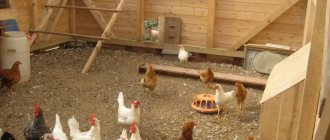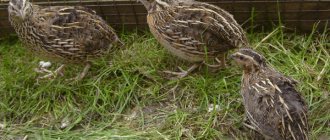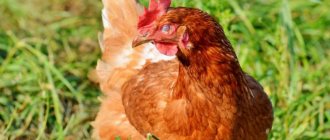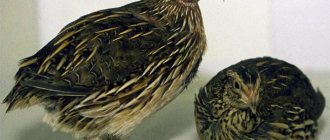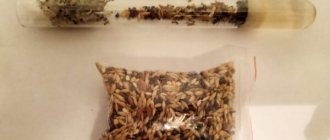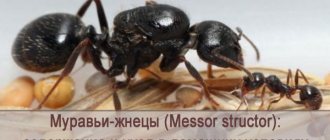Time flies very quickly. It seems that it is still the height of winter. But now it’s time for amateur poultry farmers to think about who will live in their backyard when warm days come.
I myself am a fan of ordinary domestic chickens. Moreover, I have been hatching chickens for many years without the help of a hen or a special incubator; you can also build an incubator yourself - belagrotorg.ru/poleznoe/382-inkubator-svoimi-rukami.
Basic rules for caring for chickens
An important point in raising chicks is their rearing after hatching. Inspection of chicks must begin 7 hours after they “emerge.” To raise a healthy chicken in the future, you should carefully select chickens, giving preference to individuals that meet the following criteria:
- absence of bloody marks on the umbilical cord;
- soft and thick fluff on the body;
- uniform beak of regular shape;
- wings adjacent to the body;
- presence of activity;
- no eye damage.
Regardless of gender, chickens need to be provided with suitable housing conditions and good care. It's done like this.
During the first week, the room in which the box with chicks is placed should be heated to a temperature of +30 C. It should also have a lighting system, since chicks will need light for 24 hours in the first month of life. The baby's house must be constantly kept clean and the bedding must be changed regularly. You can feed hatched chicks only the next day after they are born. It is best to choose liquid porridge and corn grits for this.
Starting from the third day, chicks can be given cottage cheese and greens, pre-treated with boiling water. Particular attention should be paid to the presence of fresh and clean water in the drinking bowl. At first, it is recommended to add glucose and ascorbic acid to it, which will contribute to the stability of the immune system. We must not forget about heating the room where it is planned to house the chickens.
Hypothermia can cause the development of various diseases. It is usually accompanied by yellow diarrhea. Traditional methods and disinfection of the premises will help correct the situation.
If chicks are given low-quality food, they may develop food poisoning and vitamin deficiency. In addition, chickens often suffer from typhoid and salmonellosis, which are caused by dirt; these diseases are immediately identified by the appearance of white discharge on the litter. The appearance of red diarrhea indicates a serious disease - coccidiosis, which is treated with veterinary drugs and mandatory disinfection of the premises is carried out. If everything is done correctly in the maintenance, then over time the chickens will turn into energetic and healthy chickens.
To learn how to hatch chickens in an incubator step by step, watch the following video.
Chicken diseases
After hatching young animals, it is important to consider the conditions of detention in order to prevent various diseases. If fed improperly, chickens may develop vitamin deficiency and food poisoning.
If conditions are far from ideal, then children can get salmonellosis and typhoid. Broiler chickens are often vilified if the salmonella bacillus enters the fragile body of the future chicken. This disease appears very quickly and progresses rapidly. White discharge.
Yellow diarrhea can “speak” of hypothermia, stress, or infection. Traditional methods are used for treatment. The premises are being disinfected.
Bloody diarrhea is the most dangerous symptom. All birds can die from it. This disease is called coccidiosis. For treatment, veterinary drugs and disinfection of the premises are used. Proper and timely care of the brood will allow you to raise healthy and energetic chickens.
What temperature is needed in the incubator to produce more chickens?
Try keeping the storage temperature at 4°C for a few days instead of the usually recommended around 16°C to help produce more female chicks.
Interesting materials:
How to clean the inside of UGG boots? How to clean a jacket collar without washing? How to file a claim for incapacity? How to serve salted mackerel? How to apply 42500 through Kaspi? How to emphasize appeal in dialogue? How to emphasize a predicate subject? How to emphasize functional parts of speech? How to support kidney function? How to keep your kidneys in good condition?
How many eggs to put under a hen
Every owner is interested in the chicken laying as many eggs as possible in one roost. However, you should understand that the number of eggs is limited. Therefore, when thinking about how many eggs you can put under a hen, you should know that their total number should not exceed 15 pieces. Moreover, the question of how many eggs are laid under a hen should not come first
After all, not only their quantity, but also their quality is important.
First you need to pay attention to the size, they should not be too large. Medium-sized eggs usually form full-fledged embryos
Too large ones may contain two yolks, which clearly means a defect. It is impossible to get offspring from such an egg.
Shape also matters. There should be no defects on the surface, much less cracks. In addition, it is necessary to study the position of the yolk. To do this, you should use an ovoscope. If everything is good, when you turn the egg, the yolk turns with it, and does not float away.
How many eggs to put under a hen.
The eggs should not be too old. Only those that are no older than 7 days and, most importantly, were stored at a temperature of 8 to 15 C are suitable for inhibition.
So, the following eggs are not suitable for incubation:
- irregular shape;
- with defects and cracks;
- with displaced yolk;
- with a bloody dot inside;
- with thickening on the shell;
- with an air chamber.
To answer exactly how many eggs for a brood hen, you need to estimate the size of the hen itself. The eggs should be covered by the hen's body, so their number should not be too large
It is important to note that if you have fresh chicken eggs, you can add duck or goose eggs. Birds usually mistake them for their own.
In addition, it is worth remembering that during roosting, the chicken can continue to lay eggs. In order not to confuse the new eggs and remove them during the process, the old ones should be marked with markers.
When to ovoscope chicken eggs?
The first ovoscopy can be carried out 4-5 days after egg laying. With this examination, it is possible to separate non-living and unfertilized embryos so as not to incubate them. The second candling is carried out after 7-8 days of egg incubation. At this time, a large dark embryo should already be visible.
Interesting materials:
What is generational continuity? What is pressing in basketball? What are straight copy stitches? What are participial and adverbial phrases? What are techniques in literature? What is a direct speech application? What is the Tao Tao app? What does it mean accepted to a transit warehouse? What is customary in the communications department? What is food appropriation?
Feeding chickens at home
Chickens that have just hatched from an egg do not yet know how to eat on their own. The yolk sac retains a small supply of vital elements, which should last them for several hours.
After this, a feeder is placed in front of them, and the chicks learn to peck the food themselves. The basic rule when feeding chickens at home is to follow the regime and menu, focusing on their age.
Basically, babies are fed the following foods:
- Feed.
- Corn.
- Dairy products.
- Greenery.
- Vitamins.
General recommendations for proper feeding of chickens:
- Feeders should only be filled one-third full so that the food is not trampled too much.
- All chicks should be well fed. If suddenly several babies begin to rarely approach their feeder, they should be separated and fed using a pipette with a mixture of milk and mashed egg yolk. After they get stronger, they are placed back with their brothers.
- There should always be fresh water in the room, which is updated regularly.
- To prevent diseases, chicks should be given a saturated solution of potassium permanganate three times a week.
- The feeder must be cleaned and disinfected regularly using a hot soapy solution or 5% formaldehyde solution. Residues of feed should always be removed to prevent rotting.
How to feed newly hatched chickens
It has been scientifically proven that the faster a chick learns to peck food itself, the better and faster its digestive system will develop. As soon as the baby eats a grain in the very first hours of his life, his brain will immediately reinforce the feeding reflex. If several hours have passed after hatching and the baby has not touched the food, a nutritional deficiency occurs, organs begin to develop poorly, and serious problems may subsequently occur.
Thus, chickens should be fed as soon as they are born. Having dried and become stronger, they begin to stand on their legs and should already be trying to peck at something. They pour a little corn grits into a flat feeder or just at the bottom of the box. It is small in itself, so it is well suited for newborn chicks.
There is some debate surrounding egg yolk as to whether it should be given to newly hatched chicks. Some poultry farmers are sure that a hard-boiled and chopped yolk brings only benefits. Others argue that it is too fat for such babies.
Veterinarians adhere to the latter point of view. According to their observations, such food does not put stress on the stomach muscles of a newborn chick. Because of this, the formation and structure of its walls does not occur properly. If after such soft food you give the chicks the roughage they need, an upset stomach often occurs.
Also, because of the yolk, pathogenic microflora multiply in the intestinal system of the chicks. In addition, along with the yolk, the growing body receives too much fat.
What to do immediately after the chicks hatch?
After the young chicks have hatched, it is necessary to begin drying them. If they appeared in the incubator, it means they will dry out on their own. When they appear under the hen, you will have to carefully remove them from the nest. This is done carefully so that the chicken does not notice and does not leave the laying site. All young chicks are placed under a lamp until they are dry.
See also
Why laying hens start molting, what and when to give at homeRead
When they are completely dry, they are placed back under the hen for further rearing.
How does a rooster impregnate a hen?
One rooster should have an average of 10 girlfriends
The sexual physiological characteristics of the rooster are not visible outwardly; the intimate organs of birds of both sexes are the same and represent a cloaca. In roosters, the testicular canals exit into the cloaca, and in chickens, the oviduct. During sexual intercourse, the cloaca come into contact and the seed enters the hen's oviduct. Fertilization takes place in the oviduct funnel - sperm penetrate there after mating. They can be stored there for up to 20 days: the eggs will be fertilized during this time, even if the rooster does not trample this hen.
A small harem will lead to the fact that a loving rooster will simply torture the females. They will look plucked and unhealthy, because in a fit of passion the male sits on the lady’s back and grabs the scruff of the neck with his beak.
Rooster tramples hen
However, it is worth noting: the fewer coitus a rooster has per day, the more “live” eggs there will be, and, accordingly, offspring. In large farms, where one male is not enough, roosters of various age categories are kept. Otherwise, bloody battles for leadership cannot be avoided.
Tips for choosing hatching eggs
First, bet on the freshest fertilized eggs, with a maximum 7-day shelf life.
Second, select eggs that have been stored at 10 to 18 degrees and 75 percent relative humidity.
Thirdly, eggs with defects (cracks in the shell, marbling, rough shell...) are not your option.
Of course, try to place even batches of medium-sized eggs into the incubator.
By the way, avoid incubating eggs with internal damage. For example, with broken cords.
Caring for chicks after incubation
Breeding chickens in an incubator also involves caring for the chicks until they are sold or until they become stronger - the first week of life.
When a yellow chick is born naturally, the chicken takes care of it, and the responsibility for the chick after incubation falls on the shoulders of the poultry farmer. For the first few days, the chicks are kept in a box.
Keeping chickens in the first 7 days of life requires compliance with several rules:
- Temperature conditions. Newborn chicks should be kept at a temperature of 30 ⁰C. After 5 days it can be reduced to 28 ⁰С.
- Lighting should be around the clock.
- Hygiene. It is necessary to ensure the cleanliness of the box. There is paper or soft cloth on the bottom, which is changed daily. After 5 days, it is better to transfer the chicks to cages with a fine-mesh floor and a litter shield.
- Planting density. Day-old chicks will feel comfortable when seated at 25-30 birds per 1 sq.m. It is necessary to increase the space from 4 weeks of age.
- Feeding. Feeding should begin no earlier than 12 hours later. Corn grits are ideal as a first food. On the second day, other cereals (semolina, wheat) and low-fat dairy products are added. From the third day greens are added. So that the yellow chicken can easily consume the grass, it is necessary to scald it with boiling water, chop it and mix it with cereal. In the first week of life, feeding is necessary every 2-3 hours.
- Drink. The main source of drinking is clean water. In the first hours, it will be useful to give the chickens a glucose solution to drink. Starting from the second day, you can pour yogurt into the drinking bowls.
https://youtube.com/watch?v=s2Ldfz4aAm8
Chicken coop microclimate: temperature, humidity and lighting
In order for a brood hen to hatch chicks in a chicken coop, an appropriate microclimate is required:
- control of gas composition of air;
- maintaining the correct temperature;
- ensuring the required level of lighting;
- stabilization of air humidity.
Regarding eggs, the matter is somewhat simpler than with an incubator. Since the egg without an incubator is constantly under the hen, there is no need to worry about whether it is maintained at the correct temperature and humidity. This is a natural way of incubation, and the chicken itself creates the necessary conditions for the eggs.
But a hen needs special conditions to effectively hatch an egg. An adult bird feels comfortable at an air temperature of 15 to 18 degrees.
This air temperature can be maintained in the autumn-winter period by artificial heating. For these purposes, it is better to choose chicken coops with a wooden floor, insulated with several layers of hay or straw.
You can also use infrared lamps. They can be turned on during the cold season, along with an infrared heater. This will allow you to hatch chickens without an incubator even in winter.
But it is important to ensure not only that the temperature does not drop relative to these indicators. An increase in air temperature can negatively affect the condition of chickens, and above 30 degrees can lead to the death of a chicken. In this case, air humidity should be from 60 to 70%.
It is necessary to use a gas analyzer to monitor the gas composition of the air in hens. The litter produces hydrogen sulfide and ammonia. These gases make the bird feel worse. They should be no more than 5 and 15 mg, respectively, per 1 m3.
In order to ensure the required level of humidity and air composition, care should be taken to ventilate the room for the hens - install a ventilation pipe. But under no circumstances should drafts be allowed!
Natural lighting should be used to the maximum. The artificial one should not be dimmed - the brightness will irritate the hens, they can abandon their eggs, become aggressive, and destroy future offspring. You need to use incandescent lamps from 40 to 60 W in the calculation: 4 W x 1 m2 of floor. The nests can be curtained a little.
| No. | Microclimate factor | Index |
| 1 | Air temperature | 15-18̊ C |
| 2 | Lighting | 4 W x 1 m2 floor |
| 3 | Air humidity | 60-70 % |
| 4 | Gas composition of air: · ammonia hydrogen sulfide | no more than 15 mg per 1 m3 no more than 5 mg per 1 m3 |
Inspection of chicks
Egg breeds are assessed six hours after hatching, meat chickens are assessed after 10 hours.
A newborn chick should have the following external signs:
- the umbilical cord is closed, there are no traces of blood;
- yellow chicken has a shine and is soft to the touch;
- eyes are not cloudy;
- hard beak;
- the wings fit tightly to the body;
- The chicken is active and reacts to noises.
If the breeder is interested in the sex of the chicken, then there are several simple ways to determine the sex of the chicken:
- If you take the chick by the scruff or paws, the cockerels will hang calmly. In the first case, the chickens will tuck their paws, and in the second, pull their heads up.
- Under incubation conditions, the hens hatch first.
- A chicken has long feathers on its wings alternating with short ones, and a rooster has feathers of the same size.
In industrial conditions, to distinguish a cockerel from a hen, the cloaca of chickens is examined for the presence of a genital tubercle.
For farmers involved in breeding egg-laying chickens, it will be interesting to know how to determine the sex of a chicken by egg:
Determination by the shell of the egg from the side of the sharp edge - by the presence of tubercles and rings when palpated, one can conclude that a rooster will hatch. When candling an egg with an ovoscope, you need to pay attention to the position of the air sac. If it is located strictly in the middle, then a male individual will hatch from the egg.
Possible damage to eggs during candling
Checking the bookmark necessarily involves scanning it with a special device - an ovoscope. During the candling process, you should pay attention to changes and differences in shades of the content. You should find the air chamber and the yolk. It is often located in the center or slightly closer to the blunt tip. Do not take specimens in which the yolk is adjacent to the shell inside.
The air chamber is located in the blunt tip. Its normal volume is a teaspoon, and if it is less, such an egg is not worth taking. Eggs during selection, as well as during the hatching process, should be inspected, disposing of specimens with developmental pathologies. Before starting the process, remember what pathologies of embryo maturation there are.
- Stains. They usually appear under the shell shell and are caused by various types of bacteria. The spots can be of different sizes and shades.
- Bacterial cuff. This is a bacterial infection of rotting bacteria, in which the protein becomes greenish and liquefied. The entire egg in this case is opaque.
- Drying. With this, the yolk floats to the surface and dries tightly to the inside of the shell. The testicle has a strong and unpleasant smell.
- Bloody stain. Various types of blood inclusions are observed on the surface of the yolk and in the middle of the white.
- Krasyuk. When clear, the contents look like a monotonous mass of a reddish hue, but there is no yolk or air chamber.
- Tech. Develops after damage to the shell under the shell during storage for more than 24 hours.
Important! If any of the above problems are detected, the egg requires immediate disposal. Such specimens cannot be boiled or fried for consumption.
Features of feeding
Laying chickens
Try to immediately accustom the bird to eating greens. This will help you avoid additional costs for vitamins and supplements in the future. After all, fresh greens are a real storehouse of vitamins.
If chickens are kept in an enclosed space, they should be given fish oil for food from 5 days of age at 0.1-0.2 g per chicken. It is advisable to mix fish oil with crushed grain, so it will feed faster.
At the age of one month, young hens should weigh 220-270, cockerels - 290g; at three months - 970-1000 and 1150; at five months of age - 1600-1700 and 1900. Thus, you should control the weight in order to select the strongest individuals.
An approximate diet for egg-laying chickens, g per head per day, is presented in Table 2.
table 2
| Feed | Age of chickens, days | ||||||
| 1-5 | 6-10 | 11-20 | 21-30 | 30-41 | 41-50 | 51-60 | |
| Ground and crushed grain | 4 | 7 | 11 | 18 | 28 | 38 | 45 |
| Cake | — | 0,2 | 0,5 | 0,6 | 1,2 | 1,5 | 2,0 |
| Boiled potatoes | — | — | 4,0 | 10 | 14 | 18 | 20 |
| Cottage cheese | 1 | 1,5 | 2 | 3 | 4 | 4 | 4 |
| Hard boiled eggs | 2 | 2 | — | — | — | — | — |
| Dairy products | 5 | 10 | 15 | 20 | 25 | 30 | 30 |
| Fresh herbs and boiled carrots | 1 | 3 | 7 | 10 | 15 | 17 | 20 |
| Chalk, shell | — | 0,2 | 0,4 | 0,5 | 0,8 | 0,9 | 0,9 |
| Crushed shell | — | 0,2 | 0,4 | 0,5 | 0,8 | 0,9 | 0,9 |
| Ground salt | — | — | 0,05 | 0,05 | 0,08 | 0,1 | 0,1 |
Broilers
Broiler chickens are characterized by a high growth rate, fairly large size and unpretentiousness in feeding. This is why most poultry farmers prefer broilers. In two months, the birds reach 1.4–1.6 kg of weight.
Broiler chickens are usually given a little space. They should not move much, their main task is to gain weight.
Compound feed should be introduced from the second day to 20 g. For the first two weeks, pre-start compound feed is better suited. It contains all the necessary elements for the growth and development of broiler babies. From 14 days onwards, starter feed is suitable, and from one month onwards the birds are transferred to finishing feed. Be sure to read the composition of the feed before purchasing; it should contain only natural ingredients.
From the 5th day it is necessary to introduce vitamins A, D2 and E into the food. Taking vitamins will help avoid many diseases, including rickets. From ten days of age, add chopped carrots to the main food in the amount of 5g per head per day. From two weeks you can replace a quarter of the grain with boiled potatoes; at this age they begin to slowly introduce fish and meat. Don't forget about fermented milk products.
Number of feedings per day:
- in the 1st week – up to 8 times;
- 2nd – 6 times;
- 3rd – 4 times;
- from 1 month – 2 times.
A couple of weeks before slaughter, it is necessary to exclude all additives and gravel from the diet.
When fattening broilers, it should be taken into account that the bird grows faster in the first month if fed dry food rich in protein. A one-month-old chicken should weigh approximately 600-700 g. In the second half of fattening, you can give more vegetables and herbs, and reduce the amount of protein dry food. By the age of two months, a broiler should weigh from 2 kg. To control the weight of birds, weekly weighing is necessary.
Methods and rules for purchasing young animals
For an experienced owner who has on his farm chickens of those breeds that are characterized by the presence of maternal instinct, this question, as a rule, is irrelevant. In spring or early summer, hens sit on nests, and the owner’s chores come down to preliminary collection and storage of eggs, as well as arranging a place in which expectant mothers can safely hatch their offspring. For this purpose, a quiet corner is usually fenced off in the chicken coop with a feeder and drinking bowl installed nearby. After three weeks, the babies are born, and the mothers take full responsibility for raising them. The chicks do without human help: they themselves warm, protect and walk the chickens, and the owner can only provide the kids with a diet appropriate for their age. Moreover, if desired, the poultry farmer can additionally purchase day-old young animals, timing the purchase to coincide with the time of hatching of offspring from his chickens, and carefully add “foreign” babies to the families. In this case, there is a high probability that the hens will accept the “foundlings” and begin to raise them along with their own chicks.
Responsible brood hens take care of the brood, educate them and protect them from potential enemies.
However, this option is not very common now. Many homestead owners prefer to keep birds of modern “specialized” crosses, which are highly productive, but genetically devoid of the brooding instinct. If there is a rooster on the farm, these hens lay eggs that are quite suitable for producing offspring. You can make a device for artificial incubation yourself or purchase a ready-made one. Nowadays there are many models of incubators on sale, with different sizes, feature sets and prices. If a novice owner decides to acquire young animals from scratch, he can buy a hatching egg from amateur poultry farmers or from a large chicken farm.
There is another way to buy birds: buying babies. It is especially popular among summer residents who spend only the warm part of the year on their plots, and keep the birds exclusively for fattening. In this case, you should contact a poultry farm that specializes in breeding broiler chickens.
Chicks purchased at the age of 1-3 days, with a competent approach to feeding, gain decent weight by autumn and provide tasty, environmentally friendly meat
choose the chicks wisely . To do this you need to know the following:
- Healthy day-old chicks have smooth, soft fluff all over their body, retracted “navels,” dry areas around the cloaca, clean beaks and bright shiny eyes. They stand firmly on their paws (toes straight, evenly spread), move actively, and respond to tapping on the floor.
- The appearance of the babies must correspond to the characteristics of the chosen breed or cross. It makes sense to study this issue in advance and even download the necessary images to your mobile device. Of course, if you purchase a “re-grade” chick, it will still be possible to raise the chicks, but they may not meet the owner’s expectations in terms of speed of weight gain and feed conversion rates.
- For newly born chicks, moving to a new place of residence is a huge stress, which can have a very bad effect on their health. Therefore, you need to find a place to purchase young animals, located as close as possible to your personal farmstead. If the sale takes place outdoors, it is very important to buy the babies early in the morning so that they are not exposed to uncomfortable temperatures and dampness for too long.
It is better to transport chicks in a pre-prepared container (tight box) to protect them from bright light, loud sounds and drafts
Many novice poultry farmers consider purchasing live chickens the best way to acquire feathered pets. Unfortunately, it is not. Babies bred in their own incubator, as a rule, demonstrate much better survival rates than those purchased (especially on the market). However, many troubles, including losses of livestock, can be avoided if you immediately select not the youngest individuals, but grown-up ones, at the age of 2-3 weeks. In this case, the purchase will cost significantly more, but caring for the chickens will be easier. They will already be partially feathered, not too sensitive to temperature changes, accustomed to a variety of foods, less prone to illness, and if purchased from a specialized poultry farm, perhaps even vaccinated against some infectious diseases.
How to select eggs for incubation?
Absolutely healthy laying hens are transferred to a separate enclosure. Their eggs will be placed in an incubator. Mature chickens aged from 7-9 months to 2 years are suitable for breeding. Meat and meat-egg breeds from 8 or 9 months, egg breeds from 7, because in the former, puberty occurs later.
Selected females are provided with proper feeding, consisting only of natural products:
- main feed grain;
- additives - chopped hay, cabbage, carrots.
If there are no vegetables, Tetravit is added to the grain porridge for chickens. It contains all the vitamins necessary for the life of a laying hen:
- A;
- F;
- E;
- D3
Additives that affect egg production (intensity) are excluded from the diet of female breeders. First, the eggs are assessed visually.
Their weight should not exceed 65 g. Small specimens are also not suitable. Criteria for selecting breeding material:
- clean, smooth shell without cracks, patterns, or sagging;
- average size and weight (55-65 g);
- correct shape, the presence of a blunt and sharp tip, a smooth transition between them.
The main condition is that you need fertilized specimens with one yolk. To do this, there should be 1 male for every 8 females in the chicken coop. The quality of the selected material is determined using an ovoscope. Good specimens are considered to be those that:
- yolk in the center;
- The air chamber size is 2 mm, it is located at the blunt end right in the middle.
The length of daylight hours is not increased so as not to stimulate the laying hens. Eggs from intensively laid hens are not suitable for breeding. Seeds larger than average have a low hatchability percentage. The chickens that emerge from them are sick.
Laying eggs
You can start laying eggs without taking into account any specific time of day, but most farmers still lay eggs in the evening (about 6 hours, since in this case hatching begins in the morning on the 21st day, and by the evening of the same day the bulk of the chickens is born).
Eggs that have been selected for incubation must be kept indoors before being placed in the box. This is due to the fact that if eggs are immersed in a heated chamber, condensation may form, which disrupts the climate inside the incubator and leads to the appearance of mold, which is fatal for the embryo. Therefore, 8-12 hours before the start of incubation, the eggs are kept in a windproof room at a temperature of 25 degrees.
It is advisable to lay them out horizontally. Under these conditions, the eggs warm up evenly. Vertical laying is also available - eggs are laid out in groups at regular intervals (4 hours). First large, then medium-sized and then small.
From the very beginning of laying until the 19th day of incubation, the eggs must be turned 180 degrees every two hours. Only on output trays there is no need to turn over.
That is, in general, the bookmark procedure looks like this:
- the incubator warms up to the desired temperature;
- eggs are treated with an antiseptic or disinfected with ultraviolet light;
- distributed over the tray with the sharp end up;
- the tray is immersed in the incubator;
- The doors of the device are closed tightly.
You will find more useful information about laying chicken eggs in an incubator here.
Temperature standards
Normal growth of newborn chicks is achieved by providing a balanced diet and comfortable warm conditions. A feature of newly hatched chicks is their high sensitivity and vulnerability to external conditions. A damp floor or a small draft can lead to irreversible consequences. In this regard, the chickens are dried as quickly as possible after hatching from the egg, creating conditions for them that would be provided by a hen. Temperature indicators for keeping chickens throughout their life are not constant, they change downward. It should be indicated what the temperature standards should be for chickens of different ages.
From birth to 7 days
This is the most crucial period for the poultry farmer and his feathered pets. Chicks are so vulnerable and weak in the first week of life that a loss of 1-5% of the entire population is considered normal. Young animals vitally need warmth and round-the-clock illumination, which activate life processes. The optimal temperature in the first 5 days is considered to be 30-32 C, by days 6-7 you can reduce the temperature to 26-27 C. It is advisable to install a thermometer, which should be fixed at the approximate level of the baby’s chest.
Careful observation of them will allow you to draw a conclusion without a thermometer whether the ambient temperature is comfortable for week-old chicks. If the body is cold, the chickens will huddle together in the corner of their home, and the outermost chicks will try to crawl into the center of the huddled relatives. If they are hot, the chicks demonstrate this by spreading their wings, frequently opening their beaks, the birds puff up their down, and also quickly and greedily drink water. If the ambient temperature is normal, the chicks show active behavior, do not sleep in a group, and drink enough water.
For individuals older than a week
As they grow, the external temperature is still important for the chicks, but “greenhouse conditions” are no longer required. It is recommended to lower the temperature gradually, by 1 - 0.5 degrees every 2-3 days. We present in the table the norms of temperature indicators for two-week-old chickens and older individuals.
| Chick age | Maximum temperatures, C | Minimum temperatures, C |
| 7-10 days | 29 | 24 |
| 11-15 days | 27-28 | 22-23 |
| 16-20 days | 26-27 | 21-22 |
| 21-30 days | 23-24 | 19-21 |
| From 1 to 2 months | 22 | 15-19 |
| Over 2 months | 19-20 | 10-12 |
It should be borne in mind that these indicators are averaged for laying chickens and broiler chickens. Laying hens will tolerate a slight decrease of 1-2 degrees in these temperature indicators in the room (without drafts), especially at one month of age and beyond. And for broilers it is better not to lower the minimum values, since in a cool room their growth and weight gain slows down and even stops.
When is the best time to hatch chickens?
Before you start raising chickens, you need to determine when is the best time to hatch them. Young birds can be hatched at any time of the year. However, to avoid problems, it is recommended to do this in warm weather, when the air temperature does not drop below 10-15 degrees Celsius. Therefore, many poultry farmers advise hatching chicks in May or June.
When growing in an incubator, you can do this earlier - at the end of March or in April.
How a chicken hatches eggs at home
Modern technologies make it possible to obtain a large number of chicks by incubating chicken eggs. However, this method is suitable for farms with a large number of birds. In small farmsteads, hens are still used to hatch chicks. For this purpose, certain types of chickens are selected. In addition, they must be in the period of “desire to sit on the masonry.” This condition is indicated by a number of characteristic signs by which you can select the right bird.
After testing for perseverance, eggs can be placed in the hen's nest. If the bird behaves correctly, the chicks will begin to hatch at 19-21 days. To simplify the task, make it easier to care for the hen and offspring, it is better to hatch chicks in the late spring - early summer.
Read this article about why chickens don't lay eggs.
Control and possible complications
Here are the secrets of farmers who systematically breed chickens:
- Even the most modern device and the most attentive owner are not immune from emergency situations. To protect yourself and your brood from unexpected power outages, buy incubators with an additional alternative power source.
- If it overheats, temporarily open the appliance door and cool the contents.
- In case of hypothermia, cover the chamber with hot water heating pads for a couple of hours.
- Follow the care schedule, carefully observe how many days have passed since the laying, at what stage it is.
- Do the first examination with an ovoscope on days 6-10, since only on the 6th day the blood vessels and the heart should be visible, and on the 11th day the contents should become cloudy on one side.
Important! As soon as the chick has pecked the shell, you should absolutely not help it. You cannot pick or break off the shells, as the chick must cope on its own.
- Don’t be sad, sometimes it happens that new chicken keepers end up with only a third of the chickens they set.
Now you have learned how to properly hatch chickens in an incubator. Your attentiveness and adherence to the rules will allow you to get a good brood. Or maybe you have tips and recommendations for readers from personal experience? Share in the comments.
What to feed chickens at home
What else does the proper development of chickens depend on? Of course, from nutrition. Their pecking instinct has been developed since birth, so there is no need to bottle feed them. Their menu should include the following products:
- in the first four days of life, chicken chicks should eat a boiled chicken egg, cut into small pieces;
- on the second day, boiled millet is added to the diet. At first in small quantities, and then it becomes a staple food;
- you can also give corn and wheat grits;
- It is better to refrain from adding barley and oats to your food. These grains negatively affect the gastrointestinal tract of young animals;
- on the 3rd day you can add feed mixtures to the food, but they must be of sufficient quality;
- Many vitamins are found in greens: nettles, green onions, alfalfa, carrots and clover. The greens should be finely chopped so that they do not get stuck anywhere in the young chicken;
- You should also include powdered milk and cottage cheese in the menu;
- Chickens need a constant supply of gravel near the feeder. They need it for normal digestion. Chicks can be given gravel as early as the fourth day;
- Meat and bone meal is another essential component in the chicken food chain. If it is absent, it can be replaced with earthworms;
- shell rock, which contains a lot of calcium, is considered a very valuable additive;
- Many poultry farmers recommend adding wood ash to the mash at the rate of 0.6 grams of product per chick.
For the first ten days, chickens should receive food every two hours, then 6 times a day, and then no more than four. It is recommended to sprinkle food in the places where they are located. Food in the feeder can cause severe crowding. To make sure the chicks are eating, watch them. Well-fed chickens go to bed after eating.
If among the young you notice that some chicks are less active and do not eat well, then it is better to place them in a separate box. There they will be able to get stronger and quickly catch up with their brothers. And in a common box they can simply be trampled.
Chickens should always have fresh boiled water. A saucer and a jar turned upside down are used as a drinking bowl. Thus, water constantly fills the saucer and fluff does not get into it
It is important that the water is always fresh and the drinking bowl is clean
Is it possible to do without an incubator and chicken?
It is possible to hatch a chicken from an egg without a brood hen and an incubator by setting up an imitation apparatus for artificial hatching. To do this you will need the following:
- cardboard box (50 x 40 x 50 cm);
- bulb;
- thermometer;
- extension;
- glass (30 x 50 cm);
- a piece of fabric (necessarily soft);
- sheet of cardboard (30 x 50 cm);
- container with water about 4 cm high.
The creation process consists of several steps:
- Place fabric on the bottom of the box , place water and a thermometer there on opposite sides of each other;
- make a slot in a sheet of cardboard for a light bulb socket , then insert it and connect it to the power supply;
- place a sheet of cardboard on top of the box , covering it halfway, on the other side - a sheet of glass;
- heat the air in the box to a temperature of 37 °C;
- Place eggs in the resulting structure and turn at least three times a day;
- hatching can be observed after about 21 days ; 3 days before this event, the temperature in the box must be raised to 38 °C.
Important! Specimens that have not produced chicks within 520 hours are subject to discarding.
To avoid confusion when turning eggs, it is recommended to make marks on the shell.
Video “Feeding and caring for turkeys”
From this video you will learn how to properly care for and feed turkeys.
Featured Articles
When do Indo ducks start laying eggs and how long do they hatch their eggs at home? Indo ducks are wonderful hens and caring mothers. So when do Indian ducks start laying eggs and how long do they hatch eggs at home?
How to plant a goose on eggs and what are the laying dates? How to plant a goose on eggs at home: when to plant, which ones and how to lay them. How to choose a hen and what are the laying dates.
How to properly and quickly pluck a goose at home. How to pluck a goose: preparation for the procedure. Review of the main methods: dry, scalding, special devices. Plucking a live bird.
Light mode
Chicks are not kept in the dark and therefore reliable lighting should be arranged in advance. To improve lighting, special infrared bulbs are used. Their advantages include the following:
- ease of operation;
- low cost;
- reliability and long operating time, which is 4-5 thousand hours;
- calming effect on young chicks;
- ability to regulate operating power.
Raising young animals using laying hens
Having talked about the peculiarities of feeding, it is worth highlighting another important point in raising chicks - placing the chicks under the hen. This technique is very ancient and proven. Who else can warm, feed and save the owner from the bulk of the troubles better than a chicken?
You need to choose an experienced hen, who has a well-developed maternal instinct. Otherwise, the hen may simply leave the nest and abandon the helpless babies to their fate. If the chicks do not belong to the brood of the selected hen, it is recommended to carry out the test in a very simple way.
Mother hen with chicks
In the dark, when the bird has settled into the nest, it needs to add a couple of chicks. If everything goes well and she accepts them, the remaining brood can be brought in the next day. How many chickens to place will be determined by weather conditions and the size of the selected chicken. In the spring, 14 chickens will be enough, and in the summer you can add up to two dozen.
The chicks need to be fed at the moment when the hen begins to leave the nesting house with them. Until day 30, they are given the food described above up to 5 times a day. But you can leave the chicken with her usual diet, just pour the food into a separate container.
Laying hen with young
With quality care and a varied diet, after a few months it will be possible to observe healthy grown-up young chickens, from which over time the farmer will be able to obtain high-quality products - both eggs and meat, depending on the chosen direction.
Correct lighting
The chicken coop must have electricity so that both its cleaning and operation are convenient for humans. And ideally, it is better to equip it with an infrared lamp. Then it will be much easier to raise a chicken without an incubator. It is recommended to turn on such light throughout the day in winter, and on very cold days it is worth using an infrared heater. After all, the chicken will lay eggs only in a warm place.
Broiler processing
Broiler meat can be used immediately for cooking, or frozen in the freezer at approximately 7 weeks of age. If birds are handled at home, it is advisable to handle several birds each day to avoid fatigue. Considerable labor is required to pre-clean broilers for freezing, and it can become exhausting if too much is done at one time.
Slaughtering and processing equipment must be thoroughly washed and disinfected as conditions are quite favorable for bacterial growth. The bird should be hung from a clothesline or tree branch by its legs before the throat is cut at the base of the jaw.
After bleeding, the bird should be immersed in 55-60°C water for one or two minutes to loosen the feathers for easy removal. This temperature is important as high temperature water will scald the skin and cause it to tear easily, while water that is too cold will not relax the muscles and will therefore make the bird difficult to handle.
After plucking the feathers, the head and legs are removed, and the carcass is thoroughly washed with plenty of clean water. Before washing the carcass, it is advisable to singe the remaining small hairs by holding the carcass over the flame of a gas burner and turning it evenly.
Processing should be carried out in a room that can be easily cleaned later, because blood and feathers left unattended can lead to unpleasant odors and the appearance of flies. It is worth considering the disposal of offal after the processing operation.
Chicken coop
You can raise an egg without an incubator only in a properly equipped chicken coop. It will also be good if you arrange perches made of round strong sticks in the corner of the chicken coop. Their diameter should be equal to the diameter of the handle from a garden shovel. All perches should be hung at the same level, otherwise the hens sitting above will crap on the individuals sitting below. Small ladders will need to be attached to both the perches and the purses so that the bird can climb to the place of laying or sleeping.
Setting up a good chicken coop
The following photo shows a convenient chicken coop for keeping poultry and its offspring.
It should be a small barn with an average size of 3 by 4 m. This will be enough for 10 to 15 chickens to live in it. The main thing is that the building is well insulated so that it is warm even in winter.
Setting up a chicken coop
Inside it you will need to build shelves and place on them several wicker baskets or wooden boxes with straw flooring. These are future nests for hatching chicks. Practice shows that a laying hen often independently chooses the nest she likes, and it is completely impossible to indicate to her a specific place for hatching eggs. Although you can try placing a wooden egg in a box with straw, sometimes this helps. Note that the boxes can be supplemented with a roof. In such a “house” it is much more comfortable for the hen to lay eggs and hatch her chicks.
Nest placement and incubation
The nest for the hen is not made too spacious, just enough to accommodate the hen and the straw bedding. A wooden box with a removable bottom will serve as an excellent nest - after the chicks hatch, the box is turned on its side, the bottom is attached, and the hen and chicks get a cozy shelter.
Soft, crumpled straw is placed in the nest and the rest of the arrangement is left to the hen - an experienced hen will pick up fluff and arrange the straw in the best way, making sure that the eggs do not roll into a heap and do not roll out in different directions. If necessary, you can help the chicken by placing a small cup-shaped nest under a layer of straw or by spreading straw on the sides of the nest, creating a natural depression.
Other hens can disturb the hen, disturb her, and in such a restless, noisy environment she can abandon the clutch. Therefore, the nest is set up in a separate room or a corner is fenced off for the hen. It’s even better if the hen with her brood is given not only a separate room, but also a small walk.
A selfless hen does not leave the nest to eat, drink and recover. This can lead to exhaustion and death of the bird. The hen that sits on the eggs is not disturbed for the first few days, and then every day they are removed from the clutch, offering her water and food, as well as the opportunity to stretch. At the same moment, you can inspect the nest and pick up bolts - unfertilized eggs.
They feed the hen with grain and dry shit - mash and succulent food will cause digestive upset.
The duration of incubation of chicken eggs is 21 days, after 19 days the chickens begin to break through the shell - pecking occurs, on the 20th day hatching begins and all viable chicks are hatched within 24 hours.
At the end of hatching, they take away the shells and eggs with frozen embryos and try not to disturb the family during the first day, after which they install a drinking bowl and feeder.
Diseases and parasites
No discussion of chicken care would be complete without mentioning these two factors. Proper, balanced nutrition and raising chickens in comfortable conditions will minimize these problems. At the time of purchase, day old chicks should be vaccinated against many of the common poultry diseases. It is worth finding out from the supplier who sold you the chickens whether all the necessary vaccinations have been completed, or whether it is worth negotiating this before delivery of the chickens.
Sanitation is the best known prevention of disease and parasites. Keeping the coop in order, keeping the droppings dry, and providing enough space for the chicks (1/3 square meter per broiler and twice as much for a layer) will prevent many of the diseases, parasites, and cannibalism problems that can be encountered with chickens. accumulation of poultry.
If problems develop, they need to be addressed separately. Many of the disease control drugs and parasite control drugs are not only specific to certain conditions, but are also subject to changing regulations. All recommendations and conditions must be specifically studied for accurate diagnosis and control. If the owner of the chicks contacts the chicken supplier or a representative of the feed company, then qualified personnel can help determine the cause of the disease and suggest ways to treat the chickens.
Symptoms and treatment
Each disease has characteristic signs, knowing which you can start treatment on time and prevent the death of livestock (Figure 6).
- Pullorosis
It can affect young animals of any age, with a mortality rate exceeding 60%. Infected individuals produce white feces with a strong, unpleasant odor. The chicks themselves become apathetic, sit in one place with half-closed eyes and breathe heavily.
Figure 6. Symptoms of the main diseases: 1 - pullorosis, 2 - salmonellosis, 3 - coccidiosis
This disease occurs in case of violation of the maintenance and feeding regime: unsanitary and damp conditions in the poultry house, or lack of feed rich in vitamin A. Accordingly, for prevention, young animals should be kept separately from adults, and vitamins must be included in their diet. But, if symptoms of pullorosis do begin to appear, antibacterial drugs are used (Levomycetin, Tetracycline, Kanamycin, etc.). They are added to feed or drinking water.
- Salmonellosis
This is a very common disease that can occur not only in young but also in adults, and death can occur regardless of age.
Note: Salmonellosis is also dangerous for humans, so when the first symptoms are detected in birds, it is necessary to take action.
For treatment, the drugs Ditrivet, Mepatar or Sulfadimethoxine are used (in the dosages indicated on the packaging), and for prevention, the poultry house is disinfected and the control of rodents, which are carriers of pathology, is carried out.
- Coccidiosis
It affects chickens in the first six weeks of life. Infected individuals become inactive, eat poorly, but drink a lot. They also develop red or green diarrhea, discolored scallops, and rapid weight loss.
The disease should be treated with Amprolium, Sulfadimezin, Coccidiovit or Rigecoccin. Prevention remains the same: the house is kept dry, warm and clean, and the diet is saturated with vitamins.
Diarrhea and its treatment
Liquid stool is a symptom of many diseases, so you need to determine its color. Based on this, it is possible to determine what ailment caused the diarrhea and how to properly treat it.
The color of loose stool can be:
- White - as a symptom of pullorosis, which is quickly transmitted from sick individuals to healthy ones and causes acute intestinal upset. All infected chicks are destroyed, as they can be a source of spread of the disease, and their meat cannot be eaten. The rest are given antibacterial drugs for prevention.
- With blood - in this case it makes sense to suspect infection with coccidiosis. This disease is infectious in nature and spreads quickly, so the entire livestock must be administered the drugs Avatev and Baytril in a standard dosage (indicated on the package).
- Coccidiosis also causes brown
- Green feces are accompanied by common food poisoning (when using low-quality feed). Chickens need to be given plenty to drink, as poisoning causes rapid dehydration and death.
It is important to understand that it is difficult to accurately diagnose the disease only by the color of stool and other symptoms. To be sure and begin the correct treatment, laboratory tests must be carried out immediately.
Vaccination at home
Plague is considered one of the most dangerous diseases for young poultry, and since no effective treatment has been developed for it, the only way out is to prevent infection of the livestock. In addition, this event helps prevent such dangerous pathologies as Marek's disease, Newcastle disease, salmonellosis, infectious bronchitis and decreased egg production syndrome.
Figure 7. Schedule and features of vaccination of young animals
Before starting manipulations, you need to check your general health: sick and weakened individuals will not be able to effectively resist even small doses of the pathogen contained in the vaccine and may die.
The vaccine can be administered in several ways: by drops into the nose or eyes, by subcutaneous injection, or by spraying (Figure 7). The last method is considered the simplest, since with its help you can quickly process the entire livestock. In this case, it is necessary to accurately calculate the dosage of the drug and correctly dissolve it in water. Typically, this information is indicated on the vaccine packaging.
The remaining two methods of administration require the participation of two people. One fixes the chicken in the desired position, and the second injects the drug into the nose or eyes (with a pipette) or carries out an injection (into the chest, at a distance of 2-4 cm from the keel).
It is also important to comply with the timing of vaccinations. For example, people are vaccinated against Newcastle disease three times: on the first day, on the 30th and 60th day. Vaccines against plague are administered at 16-20 weeks, and against salmonellosis - on any day from birth to 16 weeks.
Diseases of broiler chickens
Broiler chickens can be affected by the same diseases as egg-laying chicks. But it should be borne in mind that meat birds are most often kept in cages, and the spread of viruses and infections in such conditions is much more intense.
To prevent diseases in young animals, cages must be thoroughly cleaned and disinfected before new birds are added, and if any signs of disease are detected, the infected chicken must be immediately isolated.
